Matador Network's Blog, page 1076
June 14, 2019
Canada bans captivity of dolphins

Canada just handed Shamoo his freedom card. The aptly titled Ending of Whales and Dolphins Captivity Acts were passed by the country’s Parliament on June 10, ending legal confinement of marine mammals for entertainment purposes. According to a report from CBC, sea mammals will no longer be bred in or held in captivity for any entertainment purpose. Supporters of the bill immediately took to social media with the hashtags #freewilly and #EmptyTheTanks.
Animal rights activists, who have for years cited animal cruelty concerns regarding sea mammal captivity, cheered the bills’ passage. Activists have claimed that whales and dolphins suffer from psychological and physical trauma in captivity, bringing forth statistics on high infant mortality and isolation to back their cause. The new law directly addresses many of their concerns — also newly forbidden are the importing or exporting of sea mammals, captive breeding, live captures, and possession of reproductive matter.
“This is a watershed moment for whales and dolphins, and powerful recognition that our country no longer accepts imprisoning smart, sensitive animals in tiny tanks for entertainment,” Camille Labchuk, executive director of advocacy group Animal Justice, told CTV News.
The measure will most directly impact the Vancouver Aquarium and Marineland near Niagara Falls, which the report states currently holds over 60 marine mammals in captivity, including five dolphins, 55 beluga whales, and one orca whale. Marineland’s animals are grandfathered in, according to the new bills, and the park defended its practices in a statement issued on Monday. “Marineland Canada continues to be a facility where children can learn about and be inspired by cetaceans without invading their natural habitats or disturbing cetacean populations that live in the ocean. We’re proud of our work, and our contribution to research, education, and conservation.” The Vancouver Aquarium had acquiesced to public outcry in early 2018, saying it would no longer keep dolphins or whales in captivity. 
H/T: CBC

More like this: Cambodia to stop elephant rides at Angkor Wat by 2020
The post Canada announces ban on dolphin, porpoise, and whale captivity appeared first on Matador Network.

June 13, 2019
Airline performance satisfaction

There is an old adage that says you get what you pay for. And the flying public seems to be catching on.
JD Power and Associates, the nation’s default arbiters of corporate image and customer satisfaction, released its annual North American Airline Satisfaction Survey last month, and for the eighth year in a row, overall customer satisfaction is up. This time a whopping 11 points to 773 out of 1,000.
In an era where it seems the seats are getting smaller, the planes more crowded, and delays perpetual, this might seem a little counter-intuitive. But apparently consumers perceive the overall value of the flying experience to be high, and thus, are pretty happy about it.
“By far the value of the ticket is the most important thing,” said Michael Taylor, practice lead for travel at JD Power. “If you’re paying $225 to go from Miami to Chicago, you’re not going to expect a lot for that, so if you get the basic service, that’s fine. It’s about the cost of the ticket, and how fairly the passengers feel they’re being treated.”
Air travel is, to wit, one of the few products whose price has gone down steadily over the past 40 years. In 1979, for example, the average round-trip ticket cost the equivalent of about $615, and about $550 in 1990. By 2018 that number was $362. Add in an average of $22 in fees, and you’re still paying about two-thirds what it would have cost you before.
For that, people are willing to give up turkey sandwiches at meal time.
Despite what you see on TV, airlines are doing a good job
It’s not just lowered expectations from a lowered price point that has people feeling better about air travel. While airport campouts and forcible flight removals grab headlines, for the most part the airlines are doing their jobs much better. And people have taken notice.
“The past three years operationally, have been great,” Taylor said. “[Airlines] hardly ever lose bags, they hardly ever refuse boarding involuntarily, and on-time performance had been pretty good.”
He’s not just spouting that off, either. In OAG’s 2019 Punctuality League, US carriers were five of the ten most punctual large airlines in the world. None rated below 70 percent in on-time performance.
Using technology to improve service
The biggest component in satisfaction is service, and airlines are using personal data to better connect with their regular customers to make them feel more valued.
“Delta tasks their flight crew with interacting with four or five status fliers each flight,” Taylor said. “You’ll see them tapping into their cell phone, which tells them who the person is at every seat, how often they fly, what was their last complaint, what kind of meal do they order, where do they usually sit.”
United Airlines uses that same technology as part of what Taylor calls their “friendliness kick,” using people’s names as much as possible.
“You hear your name said by a flight attendant, that’s worth 125 points out of 1,000 point scale,” he said.
American has done its part by improving things like Wi-Fi speed and updating its fleet of planes, and it was the most improved airline this year with a score up 25 points.
Bag fees and basic economy no longer an issue
When basic economy was first introduced a couple of years ago the flying public cried foul, complaining they’d been duped into buying tickets that carried loads of extra fees, making them feel like second-class citizens by denying them space in overhead bins.
“Basic Economy was introduced by United and American last year and not done very well,” Taylor said. “They’ve recovered from that problem they had communicating what exactly Basic Economy meant.”
Airlines have acquiesced on overhead space, and now allow most basic economy customers to use the bins. They also explain in big, page-long alerts, what your basic economy fare means when you buy it. Which, once again, effectively manages expectations.
Those fees are also making the airlines a lot of money, which they’re reinvesting in the badly needed airport improvements tax dollars can’t buy.
“Bag fees are $4.5 billion in revenue,” Taylor said. “They’re taking that and improving airports. Aggregating all those things and creating profitability, they’re improving equipment and ground facilities.”
This, in turn, shows people their fees aren’t just being swallowed up by shareholders, and lets them feel a little better about plunking down $25 to get Christmas presents home.
Legacy carriers still have a ways to go to catch up to discount airlines — JetBlue and Southwest still rated higher than Alaska Airlines, the highest rated legacy carrier — but the gap is closing. And if cheap flights mean people get to see more of the world, it seems everyone in the industry is winning.
So while we’re no longer in what some think of as the “golden age of flying,” we may be in a golden age of air travel value. Relatively, flying is cheaper than ever, and with managed expectations and a reasonable perception of value, the flying public remains highly satisfied. 

More like this: Air travel is going to be hell this summer, thanks to these two issues
The post Airline satisfaction is up again. Dear god, how? appeared first on Matador Network.

Traditional Kenyan foods

Exploring the food of the Kenyan coast is a lesson in history. The dishes are a mix of the many cultures of the region, from the Bantu peoples to Islamic, Indian, and European influences. To eat along the coast of Kenya is to learn its rich Swahili past.
Swahili represents many things. It is a people, it is a language, it is a culture. The Swahili region stretches the east coast of Africa from Kenya to the bottom of Tanzania. The language and the culture come primarily from many centuries of interaction between indigenous Bantu and Arab traders. The traders were looking for ivory and gems, and as compensation, they traded spices, clothing, and cutlery. Traders from Egypt, Persia (modern day Iran), India, and Indonesia also joined. In the 15th century, the Portuguese came, followed by other Europeans. All of this influenced the way of life and the food of the Swahili Coast.
Coastal Kenyan food is loaded with spices and coconut. The taste is piquant and flavorful, and the cooking styles can be found from the beaches to the capital city of Nairobi. To try for yourself, start with these eight dishes that tell the history of the region.
1. Pilau

Photo: Sopotnicki/Shutterstock
You may have tasted this dish under a different name. Some of the many regional names it goes by: pilaf, pallao, pulao, pulaav, palaw, palavu, plov, polov, kurysh, fulao, fulaaw, fulav, and fulab. Among the Kenyan Swahilis, it is pilau.
Pilau is prepared by adding to a pot, in this order, whole spices (like cumin seeds, black pepper, cinnamon, cardamom, and cloves), meat (like beef, goat, chicken, or fish), and rice. It’s all cooked together in the same pot. This is the traditional method of preparing this dish. The modern method swaps whole spices with a ground spice mix called pilau masala. The spices are a bit tangy in the former. Pilau is served with a tomato, onion, and a chilli hot sauce called kachumbari. It’s eaten without cutlery.
It’s not clear who introduced this meal along the Kenyan coast, but it’s likely from the Arabs and Persians, which both have versions of this dish. Regardless, this deliciously spicy meal is very popular among the Swahilis and is a menu-must during special occasions and festivities like Eid-ul-Fitr (end of the Ramadan fasting period) and weddings. You can savor this delicacy at any restaurant in the coastal region.
2. Chapati

Photo: Sopotnicki/Shutterstock
Chapati is a soft flatbread made from unleavened wheat dough seasoned with salt. The dough is divided into small chunks that are rolled into a circular shape about an inch thick in a way similar to a pizza crust. During this process, the dough can be oiled and rolled several times or just once. The uncooked chapatis are then shallow-fried on a flat pan. Chapatis are best served with meat stew (beef, goat, or chicken) or cereal stew (lentils or green peas), and deep-fried chicken.
Flatbreads date back to early wheat cultivation in Egypt. Versions of chapati can be found throughout the Middle East, and the most famous hails from India. While the original recipe for this delicacy is still widely used along the Kenyan coast and the country at large, there are numerous variations available today that use cassava, pumpkin, potatoes, carrots, or herbs.
3. Mbaazi za Nazi
When the question “What’s for breakfast?” is fielded in most countries, the answer is often eggs, bacon, bread, or cereals accompanied by tea or coffee. On the Kenyan coast, there is only one answer: the scrumptious mbaazi ya nazi na mahamri with your beverage of choice.
Mbaazi za nazi are pigeon peas cooked in coconut milk, and mahamri are sweet and deep-fried pieces of dough similar to doughnuts. Pigeon peas are purely a breakfast item in the coastal region. In rare cases, they’re served with chapati. The use of pigeon peas on the Kenyan coast comes from trade with Indians.
4. Biryani

Photo: Fanfo/Shutterstock
Another spiced rice dish that’s equally loved by Swahilis (and Kenyans at large), biryani uses the same cooking style and similar spices as pilau with the exception of turmeric. Biryani is made with vegetables and meat (goat, chicken, or beef), boiled eggs, and potatoes. One variation uses a combination of potatoes, boiled eggs, and chicken, but the most popular recipe uses a combination of chicken and boiled eggs.
Patience is a key component for this dish. Originally from India, where there are many different types of biryani, it employs as many steps as it does ingredients. The meat is marinated either overnight or a few hours prior with yogurt, chopped tomatoes, fried onions, chili powder, turmeric powder, crushed ginger, garlic paste, and salt. The eggs are boiled beforehand and vegetables are fried separately — just don’t forget the preparation of kachumbari sauce. The final ingredient is saffron or curd milk (or for that special Swahili twist, coconut milk). The meal is served with some plain yogurt and lemon pickle or kachumbari sauce.
5. Coconut rice
At first glance, Kenyan coconut rice looks like a normal rice dish. But on first bite, the strong flavor of coconut fills your mouth. If you look closely, you’ll see the tasty coconut flakes.
It’s originally from India, and is steeped in flavor for such a simple dish. The white rice is cooked in coconut milk, and coconut flakes are added to enhance the palate. It’s served with steamed vegetables or meat stew (chicken, beef, goat, or fish). The coconut oil gives it a creamy taste and a silky texture. Coconut rice is readily available in restaurants along the Kenyan coast, but not as much outside of that region due to the availability of fresh coconuts.
6. Bhajia

Photo: Keshia/Shutterstock
Bhajia are delectable fritters served along the coast. They’re made with thinly sliced potato chips (about an inch thick) that are soaked in a batter made of gram flour, corn or rice flour, coriander and other herbs, garlic, and pepper. The potato slices are then deep fried and served hot with either ukwaju (tamarind sauce), meat (beef, goat, fish, or chicken), or vegetables. The spicy taste and aroma are distinctly Indian, where the dish comes from.
7. Kebab
The next time you decide to break to the Kenyan coast, do not be surprised when you order a kebab and what you get is far from your expectation. This popular snack, with origins in the Middle East, is not your normal meat skewer kebab. The Kenyan kebab is prepared by deep frying a roll of minced meat (beef or goat), a mix of onion and herbs (primarily coriander and garlic), and eggs and breadcrumbs to get a crunchy coat. They’re served plain or with fries and a spicy sauce.
8. Mshikaki

Photo: Sunny Forest/Shutterstock
Mshikaki are African beef kabobs similar to what the rest of the world calls kebabs. This is a fairly easy to make snack of marinated meat (beef, chicken, goat, or fish) served on skewers and grilled over coal. Of these, the most popular is the beef variety.
A disclaimer: Kenyans generally love meat. Many of the varieties of mshikaki you will find locally are entirely meat. Hotels and high-end restaurants may mix meat with vegetables and other herbs to achieve a specific flavor punch, though. It’s often served plain, but is sometimes accompanied by baked potatoes or French fries.
A culinary import from the Middle East and Persia, this snack has become so popular to warrant a festival called the Mshikaki Street Festival. It is a delight in pubs and on the streets in equal measure. 

More like this: Top Chef’s Eric Adjepong on the importance of recognizing West African food
The post 8 essential dishes to understand the history of Kenya’s Swahili coast appeared first on Matador Network.

IKEA sending one person Copenhagen

Denmark regularly tops lists of the happiest countries in the world. IKEA believes some of that Danish happiness comes from the home, and they’re sending one person to Copenhagen for two weeks in September to test that theory out.
One person will be set up with a typical local salary (and pay typical taxes on said salary), go on tours, hang with locals, and attend dinners — all on IKEA Denmark’s dime. In return, an IKEA camera crew will follow the person around to capture footage that’ll eventually be turned into a mini-documentary on Danish happiness. The winner will get the true hygge experience, something that greatly contributed to nine out of 10 Danes listing peace and happiness when they think about their homes in an IKEA-backed “Life at Home” study.
“We wondered whether happiness arises from the Danes’ authentic life at home,” Lene Gaarde, country communication manager at IKEA Denmark, told Huffington Post. “But it’s difficult for us to figure out since we, as Danes, are naturally blind to certain elements that characterize everyday life in Danish homes. That’s why we’re inviting our competition winner to Denmark to help us discover the key to the Danes’ happiness in their homes.”
Weird happiness flex aside, people really are curious about just what makes the people in the land of hygge so happy in their homes. Apply online by July 1, and when you’re working on your application for two weeks of Danish-level happiness, keep in mind the following criteria of a potential winning candidate: curious (“perhaps even born with a magnifying glass in your hand”), love to travel and meet new people and cultures, at least 18 years old, happy in front of a camera, and someone who has always wanted to find the secret to happiness. 

More like this: Phil Good Travel EP 2: YOU GOT ME COPENHAGEN...YOU GOT ME
The post IKEA is sending one person to Copenhagen to learn about Danish happiness appeared first on Matador Network.

Best places to travel in Italy
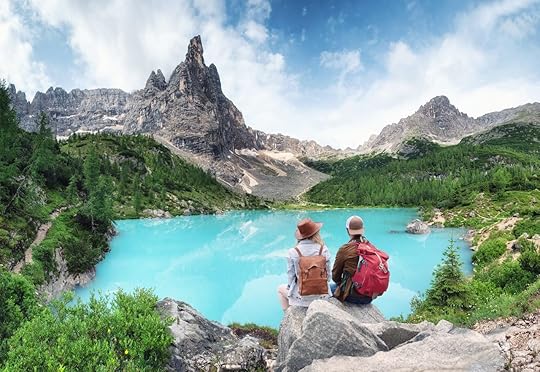
Italy’s not just a place. It’s a lifestyle.
It’s reaching for olive oil, rather than butter, then drizzling on a little extra. Taking regular espresso breaks but swearing off milky coffee after breakfast. Staying up late without staying out all night, and passing down superstitions you learned from your nonna.
Business hours are a loose concept, but you can set your watch by riposo, Italy’s answer to Spain’s siesta. The whole country’s a style icon, but it’s hardly lacking character or natural beauty, from fishing villages radiating Mediterranean vibes to low-key luxe mountain towns oozing Alpine cool. Then there’s the bigger, historic, pleasantly walkable cities.
As destinations go, Italy’s a safe recommendation for almost anyone, yet there’s always the question of where to spend those precious vacation days. Rather than trying to bounce around the entire country like you were on a cruise, choose instead to settle into one region, and really get to know it and embrace the local Italian lifestyle. To help you put together your perfect itinerary, here’s our guide to imitable Italy for every type of traveler.
For the food: Naples or Emilia-Romagna

Photo: Vladimir Staykov/Shutterstock
Grittier than canal-cut Venice and Florence with its Renaissance roots, yet every bit as rich, Naples can be hit or miss with travelers. Until you ask about the food, that is. The city’s often credited with inventing pizza, and the classic Neapolitan style is protected both by UNESCO and a government outfit tasked with certifying only the most authentic pizzerias. Margherita pies are just the beginning in Naples, though. Save room for deep-fried street foods; seafood pasta like spaghetti alle vongole, made with fresh clams; and sweets like sfogliatella, a croissant-like pastry filled with ricotta and candied fruit.
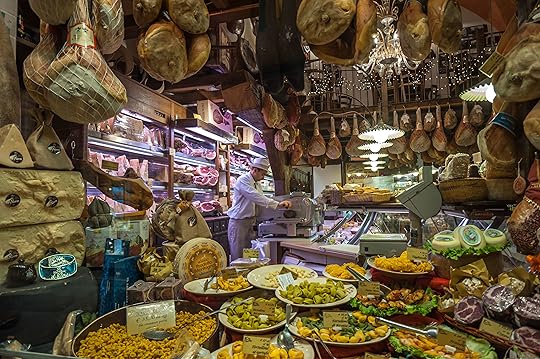
Photo: javarman/Shutterstock
Travel north from Naples and you’ll eventually hit Bologna, the capital of the Emilia-Romagna region and a powerhouse of flavor. You’ll do well there if your metabolism can withstand meaty pasta like green lasagne, tagliatelle al ragù, and tortellini stuffed with cheese and ham. If you prefer to graze rather than gorge, take it back to the basics in Parma with salty, nutty Parmigiano Reggiano and prosciutto di Parma tastings, or swing by Modena to sample the best balsamic vinegar you’ll ever taste (and, if you can swing it, a meal at world-famous Osteria Francescana).
For the wine: Tuscany

Photo: theskaman306/Shutterstock
Postcards were invented to capture places like Tuscany, where vineyards, olive and cypress groves, and swaths of sunflowers flock the hills outside landmark cities like Florence and Pisa. Anyone can appreciate the panoramas Tuscany’s landscape paints, but none more than oenophiles, who quite literally relish drinking in the scenery. Vino aficionados can whet their palates with classic Chiantis at acclaimed estates like Antinori, Castellare di Castellina, and Fattoria la Loggia before sampling vintages not made from Sangiovese grapes, especially the region’s widely grown and increasingly popular Cabernet Sauvignons.
Really, though, Tuscany’s been perfecting its viticulture since the eighth century, so you’d have to try pretty hard to be disappointed here.
For finer things and late nights: Milan

Photo: MarinaD_37/Shutterstock
Milan may be Italy’s fashion capital, if not the world’s, but la dolce vita dictates more than just the dress code in the modern, glamorous metropolis. Manage not to max out your credit card at the Galleria Vittorio Emanuele II, the oldest shopping arcade in Italy, and you’ll realize just how many other luxuries await. Think Michelin-caliber meals at restaurants like two-star Seta and one-star Alice Ristorante, bookended by pre-dinner drinks at chic aperitivo bars and nightcaps at trendy cocktail joints like Nottingham Forest. The fun doesn’t have to end there, however. Milan is a young, vibrant city with clubs that stay open late, some as late as 6:00 AM. Just be sure to get some sleep, as you won’t want to miss on the city’s famed fine arts, including Leonardo da Vinci’s “The Last Supper,” housed in the Santa Maria delle Grazie church.
For hiking, cycling, and snow sports: the Dolomites
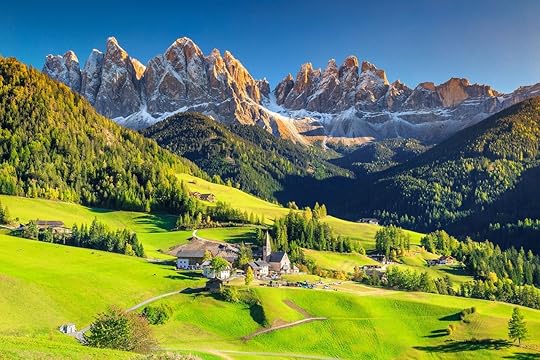
Photo: Gaspar Janos7/Shutterstock
The crown jewel of the Italian Alps, strung across northeast Italy near the Austrian border, the Dolomite range is an 18-peak, UNESCO-protected wonder that reaches an altitude of nearly 10,000 feet. Come in summer for via ferrata hiking up cliff faces, perhaps in Parco Naturale Adamello Brenta near Trentino, or mountain biking around the Val Gardena valley. Alternately, visit ritzy, sporty Cortina d’Ampezzo during ski season to sail down the same slopes as Bond in For Your Eyes Only and 1956’s Winter Olympians. Consider a day trip to the Dolomites next time you’re in Venice, only a couple of hour’s south by car; however you get there, don’t leave without seeing the beautiful 15th-century Reifenstein castle in South Tyrol.
For art and architecture: Florence
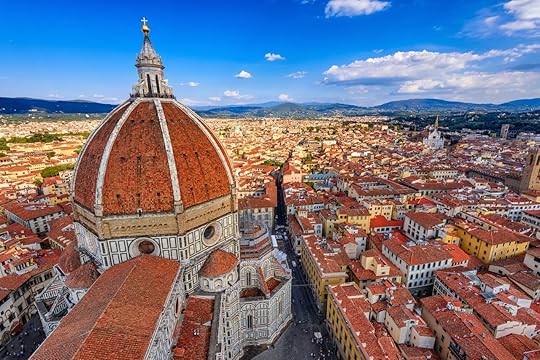
Photo: Catarina Belova/Shutterstock
Florence is, on the whole, an architectural masterpiece: a sea of whitewashed, terracotta-topped structures with the city’s centerpiece, the bulbous Duomo, rising a few stories above the rest. The epicenter of commerce and culture from the 14th to 16th centuries, aptly called the birthplace of the Renaissance, Florence continues to draw visitors for its exquisite art. Tour the Uffizi Gallery to see precious works like Botticelli’s “Birth of Venus” and the Galleria dell’Accademia for Michelangelo’s “David.” Double down with a visit to the Palazzo Vecchio to see the “David” copy, famous in its own right, and nearby Loggia dei Lanzi statue garden.
Later, climb to the top of the Duomo, also known as the Florence Cathedral, for an unbeatable lookout over the city. Youthful but not excessively young, historic but not stodgy, Florence is a treat for art and architecture lovers of all ages; even just standing on the Ponte Vecchio bridge, watching the sun sink into the horizon and dip below the Arno river, is pure magic.
For lovebirds: Verona

Photo: kavalenkava/Shutterstock
Romeo and Juliet is more of a cautionary tale starring teenage hormones than it is the #relationshipgoals love story it’s sometimes cited as, but that doesn’t make Verona, where Shakespeare’s iconic play was set, any less romantic. While Casa di Giulietta and Juliet’s balcony are obvious tourist gimmicks, the city’s wide piazzas, Roman and Renaissance architecture, museums, galleries, and cozy restaurants specializing in creamy risotto make it ideal for couples. Steal away to nearby Lake Garda for a day if you’re craving seclusion.
For summer sunbathers: the Amalfi Coast
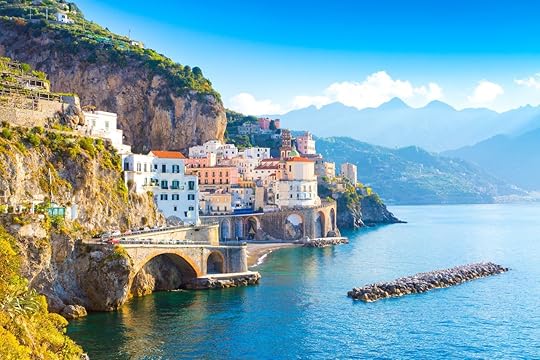
Photo: Oleg Voronische/Shutterstock
Most people think Positano and its Marina Grande beach when they hear Amalfi, but the area’s 30 miles of coastline house seaside towns both rightfully popular and nearly undiscovered. We recommend Ravello for a quieter yet equally stunning getaway, located midway between Positano and Salerno, not far from the town of Amalfi itself.
Ravello shares the coast’s iconic cliffside architecture but does one better with exquisite gardens overlooking the Tyrrhenian Sea at the 13th-century Villa Rufolo. Visit during summer to tan and catch the city’s lively music and arts festival, sometimes called the Wagner Festival after the German composer who visited the city in 1880 and was presumably as smitten as you’ll be. The best beach near Ravello is Castiglione; elsewhere, sun-seekers may enjoy sandy Vietri sul Mare beach, secret Gavitello beach in Praiano, or family-friendly Maiori and Minori beaches.
For ruins and relics: Pompeii or Matera

Photo: Romas_Photo/Shutterstock
Pompeii, the lost Roman city toppled by Mount Vesuvius in 79 AD, has been a magnet for tourists and archaeologists alike since it was rediscovered in the mid-18th century, remarkably well preserved under a thick layer of ash. Now is a particularly exciting time to visit as a 2,000-year-old shrine was newly uncovered late last year. Full-price tickets are a reasonable 15 euros. Dedicate at least three hours to exploring Pompeii (it’s a city-sized attraction, after all) and tack on Herculaneum, a neighboring city also destroyed in the eruption, if you have time.
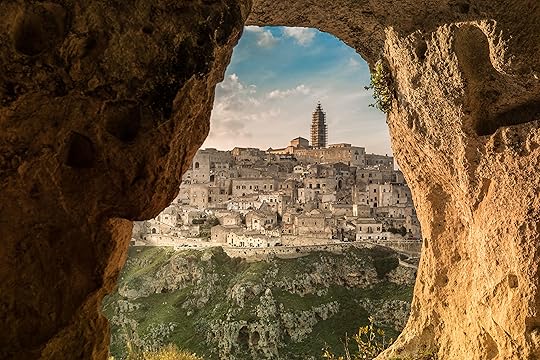
Photo: Svetla Momchilova/Shutterstock
Matera doesn’t have Pompeii’s name recognition, but that’s part of the appeal. Unlike the ancient, ash-buried city, Matera showcases two impressive networks of prehistoric dwellings, called sassi, cut from southern Italy’s limestone cliffs. It’s one of the oldest continuously inhabited settlements on Earth, albeit one plagued with poverty, disease, and neglect until more recently. All that’s changing, though. Since its UNESCO inscription in 1993 and more recent nomination as one of 2019’s European Capitals of Culture, Matera has more tourist appeal than ever before with a growing number of accommodations and dining options.
For family vacation: Rome

Photo: Boris Stroujko/Shutterstock
Italy’s dynamic capital is at once an obvious choice for a family vacation and a curious one. It’s not the easiest city to navigate, and the near-constant crush of tourists certainly doesn’t help the oppressive traffic, confusing public transport, lengthy wait times, and the like.
But the good far outweighs the bad and the ugly in Rome, and it’s perfect for groups of all ages, budgets, and interests. Alongside world-class, educational attractions like the Colosseum and Roman Forum, the city’s filled with fun to-dos that kids will eat up, like puppet theater in the park, tossing coins into the Trevi Fountain, posing with a giant marble foot, and sticking a hand in the Mouth of Truth, a stone frieze that’s said to chomp down on any arms belonging to liars. Then there’s Vatican City, technically an independent city-state within Rome’s bounds, where you can admire Michelangelo’s works of art inside the Sistine Chapel and St. Peter’s Basilica.
Walking tours are readily available both across the city and underground through the catacombs below. Don’t forget to refuel with a few scoops of gelato after a full day of exploring.
For a crowd-free retreat: Lake Iseo
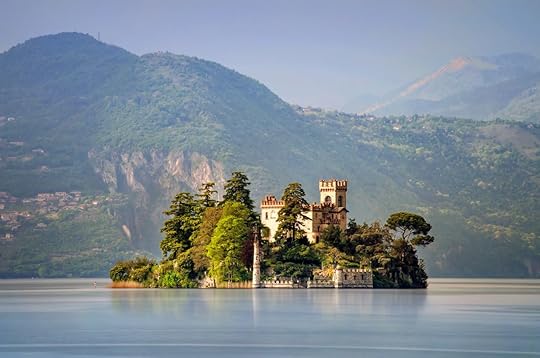
Photo: Swen Stroop/Shutterstock
Lake Iseo is what Lake Como was before Clooney put it on the map. Tucked away between Bergamo and Brescia, it’s the best-kept secret of the Lombard lakes, though chances are the glassy, snaking, mountain-ringed body of water won’t stay that way for long.
Hug the lake on a scenic drive, take a refreshing dip right from shore, or get out on the water whether by kayak, canoe, or speedboat. Then venture to nearby Valle Camonica to see Stone Age carvings, followed by a jaunt to the neighboring Franciacorta wine country, which is quickly carving space for itself as one of Italy’s premier sparkling-wine regions, when you want to channel your inner A-lister without the superstar price tag.
For off-season travelers: Venice

Photo: Rostislav Glinsky/Shutterstock
With its meandering gondolas, glinting marble architecture, and turquoise lagoon, Venice really is as stunning as they say. It’s also as crowded, a problem the city has taken measures to combat. To do your part to preserve what some consider the world’s most beautiful city, visit Venice in winter when the crowds clear out and locals come out of hiding. It’ll be misty, and cold, but pack appropriately and the only chill you’ll feel is at Saint Mark’s Basilica, where you’ll have a shot at an actual moment of silence. If you’d rather make some noise, go in February for the pre-Lent Venice Carnival festival, famous for its masks, costumes, and masquerade balls. 

More like this: The best place to go in Portugal for every type of traveler
The post The best place to go in Italy for every type of traveler appeared first on Matador Network.

Climbers fake summit

The past few weeks have been rough for Mount Everest summit-seekers. Eleven climbers from multiple parties have died so far this season and triggered international scrutiny of the permitting process for climbing the mountain. This followed a report in March that the issue of human excrement on the mountain had become so dire that enforcement was enacted to ensure climbers carry their own feces off the mountain. Now, it appears that deception may be joining the party. According to a report in Outside, three climbers from India may have made false claims about summiting the world’s highest peak in late May.
The three climbers, Vikas Rana, Shobha Banwala, and Ankush Kasana, reported a successful summit bid on May 26, saying they reached the summit around 10:30 AM. The problem is that the trio from northern India claimed they summited the peak alongside four sherpas working with Nepalese tour company Prestige Adventures, but couldn’t provide the name of any of the sherpas and failed to produce a photograph of themselves at the summit. A clear photograph depicting the face of each climber is required by the Nepalese Ministry of Tourism for certification of a successful summit bid. Additionally, according to Outside, the 2019 season showed high winds on May 26 that prevented any successful summits from taking place.
The highest verified point of their expedition was Camp III at 23,500 feet, over 5,500 feet below the summit. A sherpa on the mountain at the same time told The Himalayan Times he met the trio at Base Camp at 12:30 PM on the day of their alleged summit, which would be a near impossibility were they to be at the summit only two hours prior. A typical descent from the summit to Camp IV takes about six hours, with 11 miles and over 8,000 feet in elevation between there and Base Camp.
The climbers had been improperly certified by a liaison officer from the Ministry of Tourism, though that certification is now in question. The owner of Prestige Adventures told Outside that his company “got the summit news just a day before debriefing, but [the climbers] are not able to give proof for it. For this reason, they will not have the certificate without the proof, which we have already informed to the concerned authority.”
If the claims of a false summit report prove true, the trio would be the first to fake a summit claim since a married Indian couple was convicted of doing so in 2016, for which they were banned from climbing in Nepal for 10 years. 
H/T: Outside

More like this: Veteran Nepalese sherpa just set a world record by climbing Mount Everest twice in one week
The post Three climbers accused of faking their Mount Everest summit appeared first on Matador Network.

Whisper Ridge Resort helicopters

Mountain bikers, get ready to take flight. Whisper Ridge Backcountry Resort, located one hour north of Salt Lake City, announced via an Instagram post on May 31 that the Utah operator will open some its 70,000 acres of backcountry terrain to helicopter-served mountain biking.
The opening of its helicopter tour operations during the summer season adds a new layer of exploration to the docket for advanced-level mountain bikers. While backcountry-specific ski resorts offering helicopter-served access is nothing new (Silverton Mountain in Colorado also does this, and numerous operators throughout the United States and Canada have offered heli-skiing tours for years), Whisper Ridge is the first such resort in the continental US to extend the offer to mountain bikers.
The chopper will pick up riders up at the top of the Powder Mountain bike trail system and drop them at the top of the Limber Pine Trail. The rider then drops into the downhill track and rides 5.5 miles and 2,300 feet down to the meeting point with the Whisper Pines singletrack trail. From there, single-drop riders have two options — either pedal eight additional miles (gaining 1,300 feet) back to the pick-up point, or have the chopper take them back. Day pass riders can pedal back or have the chopper return them to the drop point at the top of the trail in what’s known as a “heli-bump,” saving any uphill pedaling. The trail passes through old-growth forest and is labeled as a moderate trail, though options for more extreme (but short) lines present themselves throughout. The resort is also in the process of adding an additional trail to be served from the helicopter drop point.
One individual drop costs $200, with a full-day pass going for $475. You’ll have to act fast in order to book a trip, however. The resort is only making 60 day passes and 10 six-pack passes (good for six days in the chopper) available for this inaugural season. Grab your spot before they fill up. 

More like this: The 5 best ski resorts in North America to go mountain biking this summer
The post Utah backcountry resort opens first helicopter-served mountain bike trail appeared first on Matador Network.

Vagina museum to open in the UK

As the world becomes more forward-thinking, topics that used to be considered taboo are now getting time in the spotlight. There’s the Museum of Sex in New York City and a penis museum in Iceland. Now, the UK’s joining in on the fun, and will open the world’s first museum dedicated to vaginas this fall.
The Vagina Museum will surround all things vaginas, vulvas, and gynaecological anatomy, and will also be gender inclusive and intersectional. The project launched in March 2017 and has put on pop-up exhibits around the UK since then. The team behind it is now working on the interim museum that will open this November at Camden Market in London, England.
Florence Schechter, the museum’s founder, is a science YouTuber and hopes to rid the stigma that surrounds that part of the body, as it can lead to harmful consequences. “What I’m hoping that people will get out of it, I think, No. 1 is that vaginas are normal and nothing to be ashamed of,” she said in an interview with PRI’s The World. “I think a museum would be a really great way of us as a community coming together and saying, ‘Actually, this is a part of the body that we should be celebrating, something we should be having conversations about.”
While the Camden museum is underway, Schechter and her team will be working on finding a permanent location in the UK. The plan is to open said location in 2032, with galleries and exhibitions dedicated to the science, history, culture, and social aspect of gynaecological anatomy. It’ll also host all kinds of events, such as feminist comedy nights, dance, theatre, film screenings, workshops, exercise classes, and the like. And if you get hungry, there are plans for a cafe, featuring vulva cupcakes, vagacchinos (cappuccinos with foam art made to look like vulvas), and more.
Currently, the Camden Vagina Museum is set to open this year but fundraising for operational costs is still going on. If you’d like to donate, you can do so on its Crowdfunder page.
When it does open, though, entry will be free. 

More like this: The ultimate rainy day tour of London’s museums
The post The first museum dedicated to vaginas to open in the UK this fall appeared first on Matador Network.

Good Burger pop-up restaurant open

At the top of the list of fictional restaurants that bring an onset of millennial nostalgia, Good Burger, home of the Good Burger, sits at the top. Now, people can get a taste thanks to a pop-up Good Burger restaurant that’s opening in Los Angeles on July 10.
The timing coincides with a Nickelodeon remake of All That (because what is a good ‘90s cultural touch point without a 2010s reboot?), and the team behind it is the same one that designed the Saved By the Max pop-up from Saved By the Bell. Good Burger comes from an All That sketch featuring Kenan Thompson and Kel Mitchell that was turned into a 1997 movie, Good Burger. Both center around the shenanigans of Dexter and Ed, two fast-food workers who interact with customers and try and keep the nearby rival Mondo Burger from taking over. The All That sketches and movie were part of what launched the career of Thompson, who is now on Saturday Night Live.
The All That reboot is being produced by Thompson and Mitchell, and premieres on June 15 with original cast members and the Jonas Brothers joining in. Mitchell teased the pop-up with a YouTube video promising good burgers, good chunks, and good shakes. A Nickelodeon statement given to Entertainment Weekly adds that anyone who makes it to the pop-up will get “Good Burger-themed service experiences, merchandise, games, secret sauce, and more.”
Pop-ups are crowded, and nostalgia and Instagram driven ones are even more so. Get your tickets early on the pop-up’s website starting June 17 at 10:00 AM PST to get a taste. 

More like this: This epic pop-up restaurant at Everest Base Camp will change how you view fine dining
The post A real-life Good Burger restaurant is coming to LA appeared first on Matador Network.

Elephant rides at Angkor Wat to stop

Wildlife conservation took one step forward recently, with Cambodia planning to stop elephant rides at Angkor Wat, a famous temple complex and World Heritage site that sees millions of tourists each year. While unfortunately the rides won’t be stopped immediately, the country plans to do so by early 2020.
Currently, there are 14 elephants in use as part of the tourist attraction. There used to be more, however, as a result of the cruel practice and treatment, several have died or fallen ill. According to the Metro, in 2016, an elephant collapsed and died while carrying two tourists to Angkor Wat. In 2018, another elephant died of exhaustion, the impetus to a petition to end elephant rides.
The remaining elephants are going to be transferred to a conservation and breeding center. According to the Angkor Elephant Group Committee, “[Tourists] can still watch the elephants and take photos of them in our conservation and breeding centre. We want the elephants to live in as natural a manner as possible.”
A spokesperson for Moving Animals, an organization that raises awareness of the cruelty of elephant rides, said, “The end of elephant rides at Angkor Wat is truly a watershed moment that shows the tide is turning against cruel wildlife tourism.”
In order to tame elephants so that they can be used to give rides, they have to go through something called the phajaan process, which is essentially the crushing of the animal’s spirit. An elephant going through this process is locked in a small space where they’re unable to move, usually a cage, and then tortured through various methods. After some time, the elephant’s spirit becomes crushed enough, to the point where they’re utterly submissive to humans, and that’s when training for the rides and other basic commands would begin.
Elephants numbers in Southeast Asia have dropped immensely over the years, due to these cruel practices and others such as hunting. It’s believed that there are still 70 domesticated elephants in Cambodia, and around 500 in the wild — numbers that include the 110 elephants living in the Keo Seima Wildlife Sanctuary and about 200 in the Cardamom Mountains.
Hopefully, other places follow suit. 
H/T: Metro

More like this: 3 reputable elephant sanctuaries in Thailand
The post Cambodia to stop elephant rides at Angkor Wat by 2020 appeared first on Matador Network.

Matador Network's Blog
- Matador Network's profile
- 6 followers



